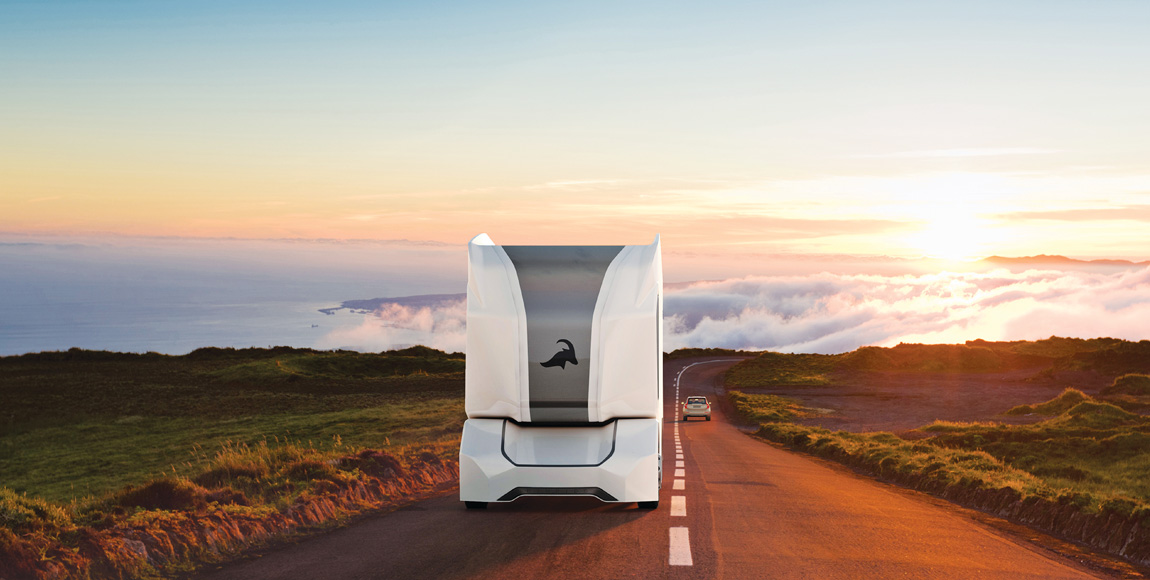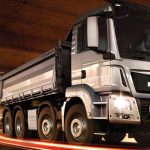Day of the driverless truck?

Imagine this … no sooner have goods been packaged for transportation than an autonomous-drive, long-haul truck slots into position at the loading dock, waits as the cargo is quickly and efficiently transferred, then checks out digitally and heads for the highway… WANITA WALLACE reports on the future of transport in the making
Platooning. It’s a big word in the transport industry. Observers believe it will change the way the world’s road-freight systems operate. For starters, there will be more trucks on the road – but fewer drivers, as platooning and autonomously driven vehicles go hand in hand.
In fact, a scarcity of truck drivers in the United States (US) is one of the most influential factors in move towards platooning. Fuel saving is another, with commercial vehicle manufacturers under more and more pressure to meet ever-tightening legislation regarding environmentally harmful emissions.
In his blog published recently on www.trucks.com, Alan Adler suggests that autonomously guided truck platoons could beat driverless cars to real-world use. And experts say that letting big trucks draft each other on highways is far easier than solving urban challenges faced by automated vehicles.
Platooning allows groups of digitally connected trucks to closely follow each other to reduce drag and increase fuel efficiency. Some truck manufacturers believe the concept will increase road safety, improve transportation times, cut costs and significantly reduce emissions.
In his blog, Adler notes that, already, companies and organisations such as Volvo Trucks, Daimler Trucks, the US Army, Partners for Advanced Transportation Technology at University of California Berkeley and Peloton Technology are developing platooning systems.
Much of the technology combines adaptive cruise control and forward collision warning with vehicle-to-vehicle communication. The safety technologies provide automated vehicle control to keep a tight formation, with vehicles talking to each other through direct short-range communication.
A spokesman for Peloton claims that in this company’s test runs – using a manually driven truck to lead a fleet of autonomously piloted equivalents – fuel savings exceeded seven percent.
Swedish manufacturer Scania – part of the Volkswagen Group – has already laid the groundwork for the world’s first full-scale autonomous truck-platooning operations, based on its own, advanced technology.
The site of the company’s living laboratory is land-constrained Singapore, where new transportation concepts, designed to increase productivity, reduce safety risks and optimise road capacity, are being put to the test. Initially, autonomously driven, cargo-carrying platoons are being used on public thoroughfares while ferrying containers between port terminals.

Scania has also recently been engaged as the lead partner in a large-scale transportation project called Companion, which is developing systems for the implementation of platooning on European roads.
The manufacturer is also currently working on enhancing wireless communication between heavy vehicles, which will allow distances between moving vehicles to be safely reduced, lowering drag and improving fuel consumption.
Scania is well advanced in cutting-edge autonomous truck technology and platooning, having carried out numerous tests involving manned and unmanned convoys, as well as developing systems to fully automate processes for precise docking and loading of cargo.
The brand is not alone. Daimler Trucks has established its Autonomous Technology Group (ATG) as a global force for the development of automated driving systems. The main focus of the new unit comprises the implementation of a road map for automated driving, as well as the setting up of an operations infrastructure and network in anticipation of series production of driverless trucks within a decade. The company has backed its strategy with an investment of more than €500 million (about R7,9 billion).
Will we see autonomous trucking and platooning in South Africa in the not too distant future? “No,” says The Transport Forum’s Harry van Huyssteen. He adds: “My personal and biased opinion on this topic is that our road infrastructure is not advanced enough to cater for autonomous driving.”
Van Huyssteen says that, locally, driverless vehicles might work in dedicated areas such as industrial precincts or campuses – but not on public roads. “There would have to be proper road markings and sensors and a host of other equipment to enable autonomous driving. We would need to get our infrastructure in place and, clearly, a huge educational process would need to be undertaken before we will be in a position to align for this.”
Published by
Focus on Transport
One Comment
Leave a comment Cancel reply
focusmagsa





Like much of modern technology, this seems too good to be true! Even as an engineer brought up with slide rules, 7 figure logs and punch card computers I can see the benefits of “platooning”. I agree however with Harry that our roads are not yet sophisticated for public operation – nor dare I say so, are our drivers? For instance, how does one overtake a platoon of trucks?
Another issue to consider is bridge design. if the trucks are expected to run with less spacing between them, is there sufficient “meat” in the rolling load factor to accommodate this or will all bridges have to have a retro-design to ensure that effectively additional loading can be handled?
Solution for South Africa? Get the heavy loads back on the railway!!